The document discusses emulsions, which are mixtures of two or more liquids that do not normally mix. It defines the key types of emulsions as oil-in-water (O/W), water-in-oil (W/O), and multiple emulsions. It also explains the differences between O/W and W/O emulsions and describes detection tests that can identify the emulsion type. Finally, it provides examples of common emulsifying agents like lecithin, soap, and gum and discusses their properties and uses in emulsions.

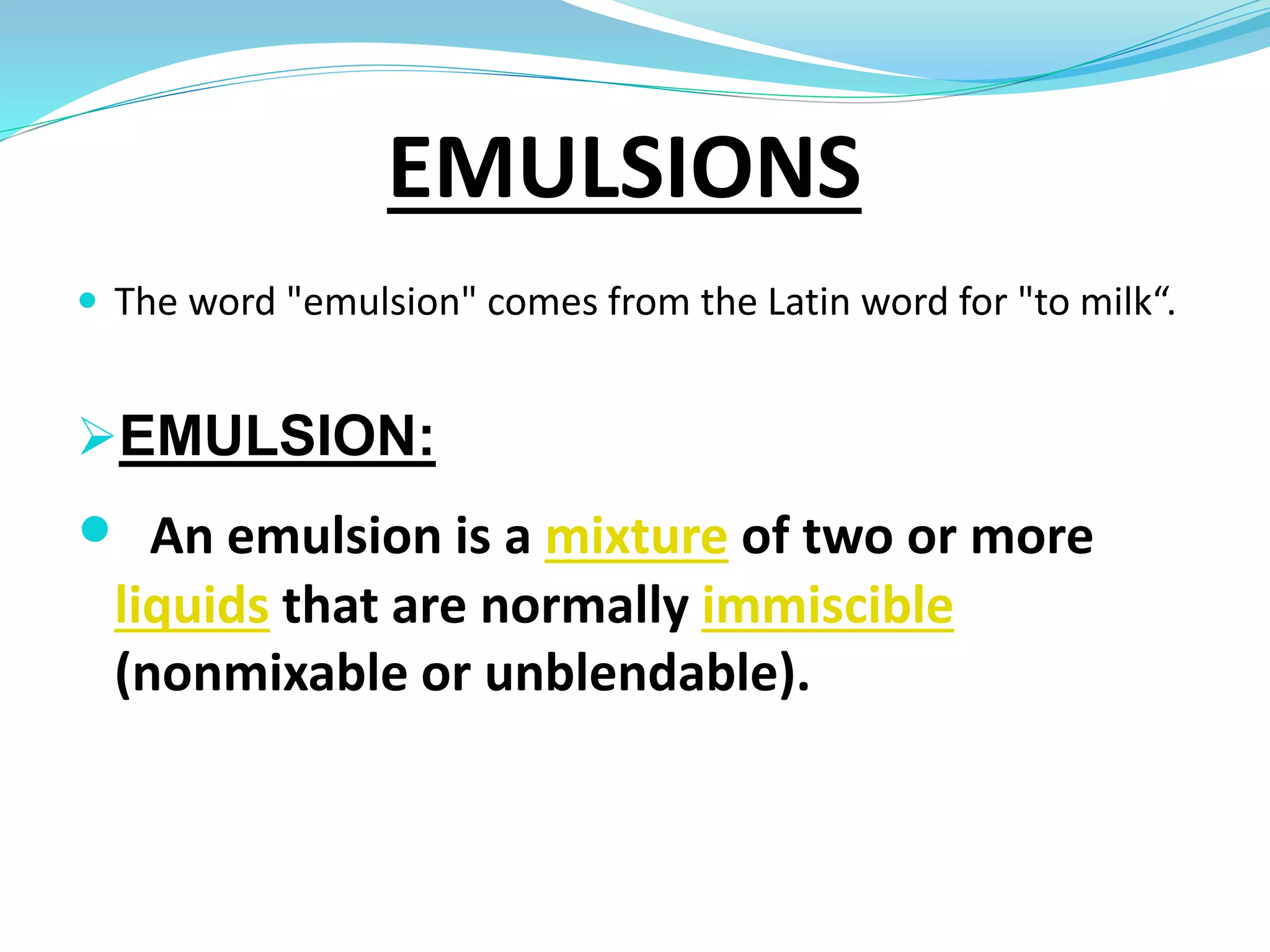
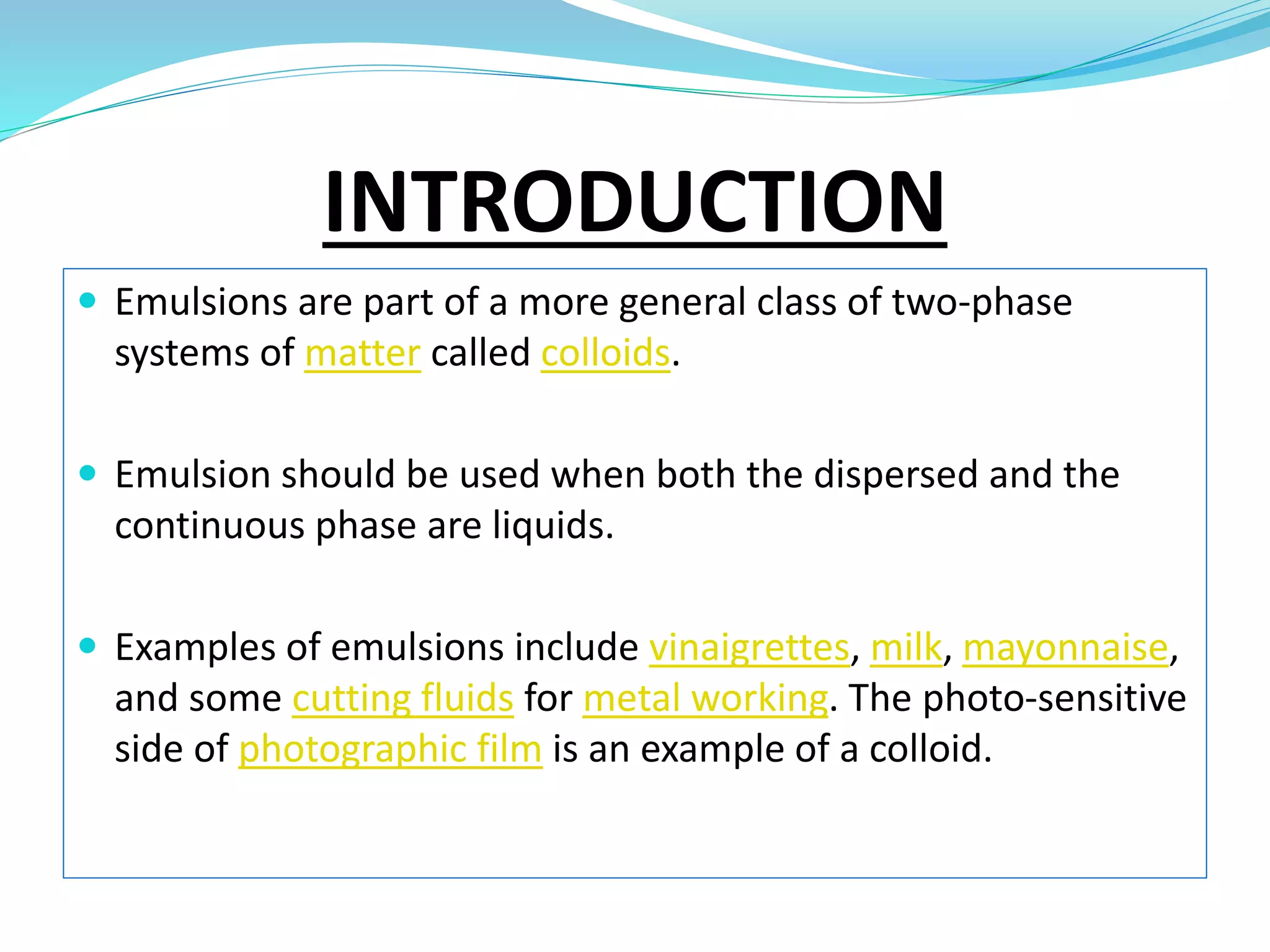







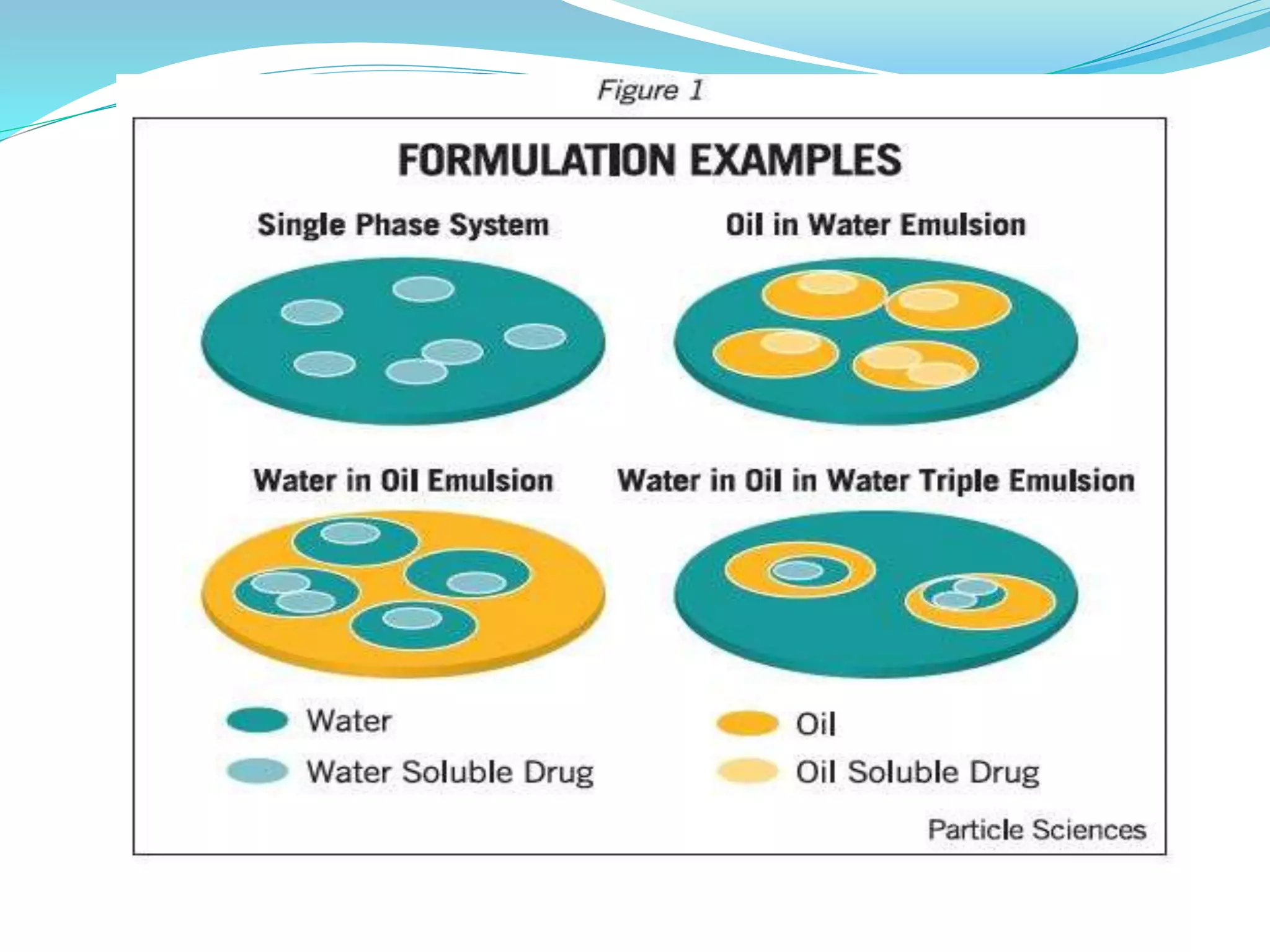
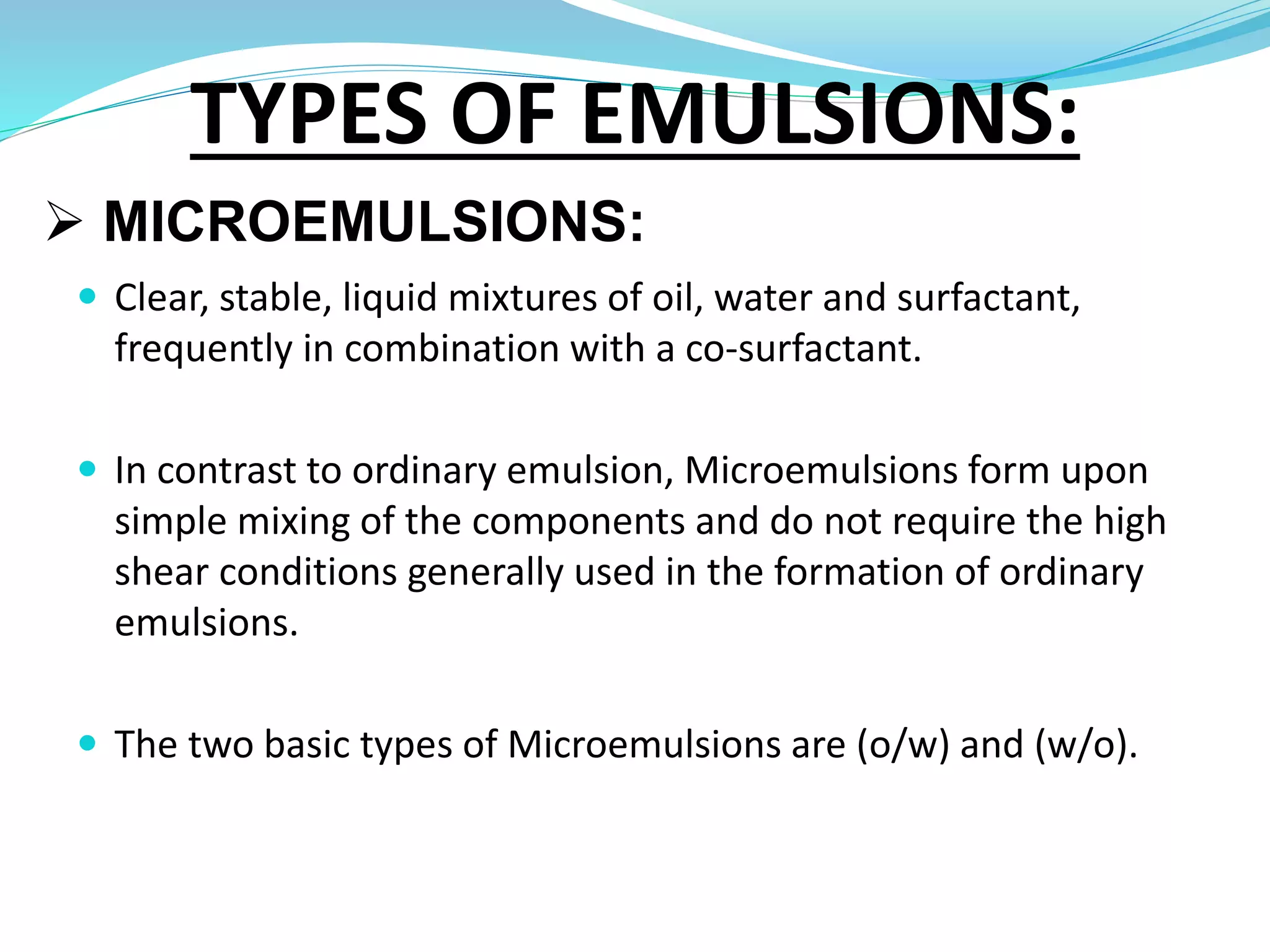







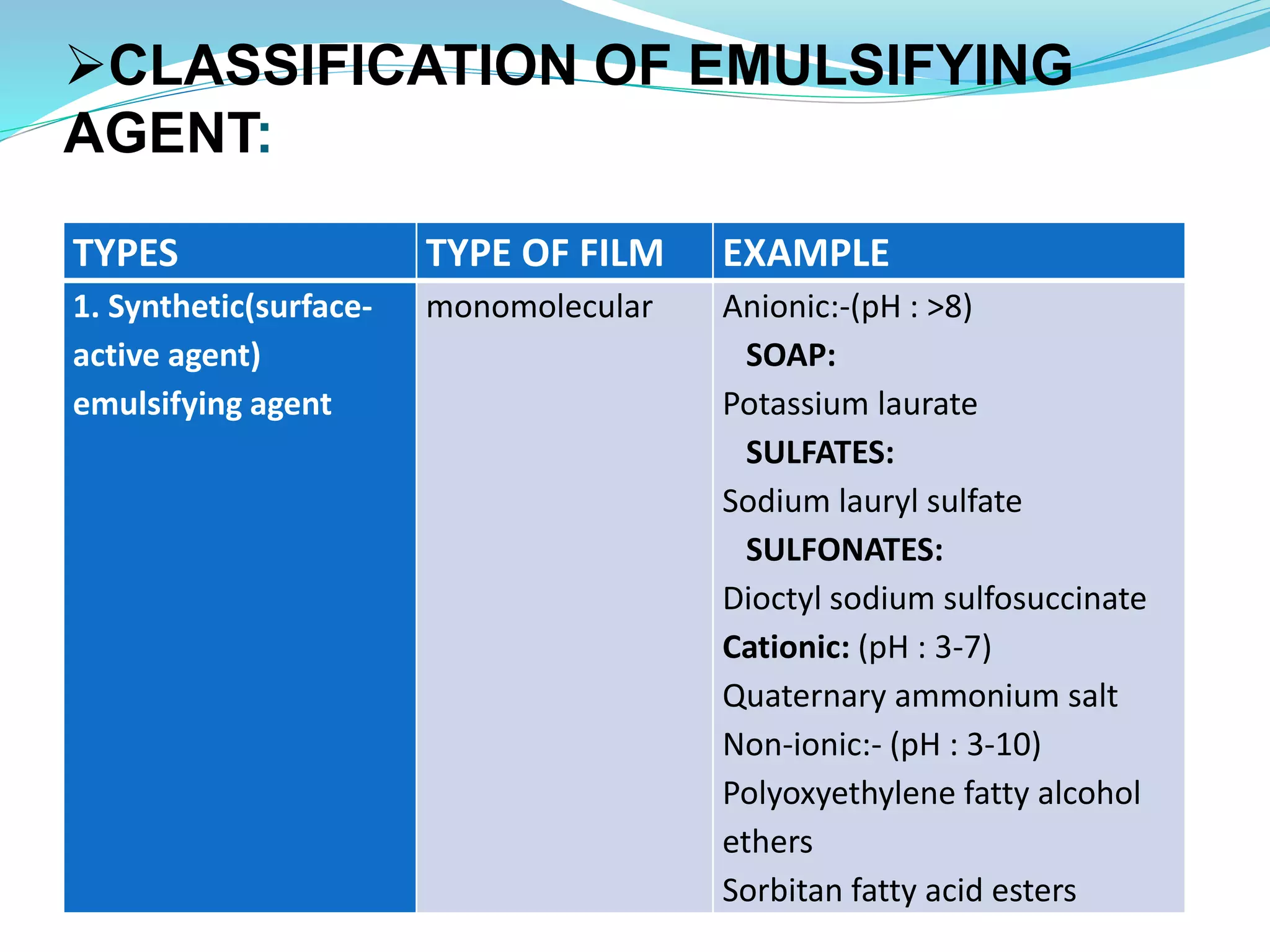



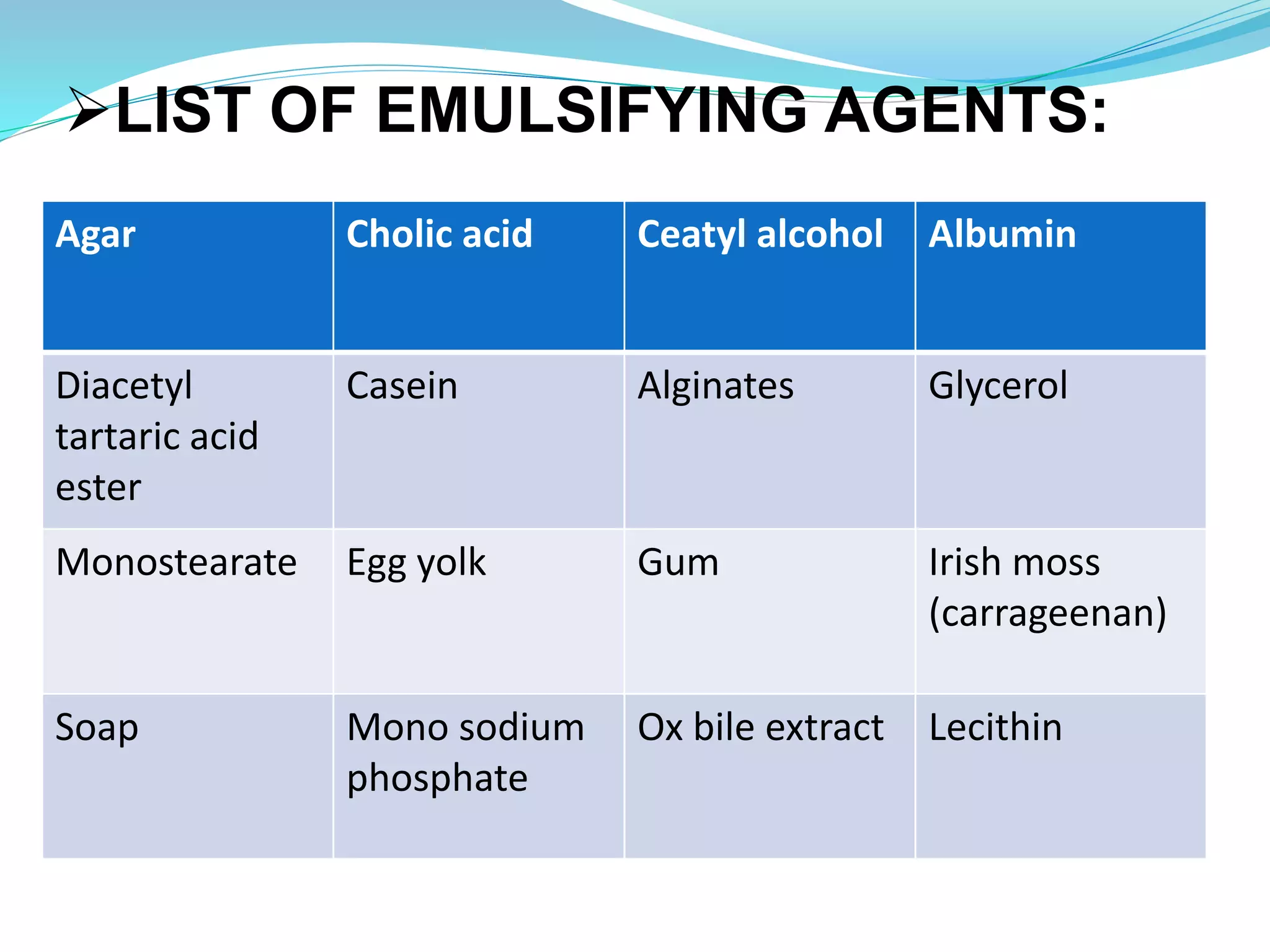











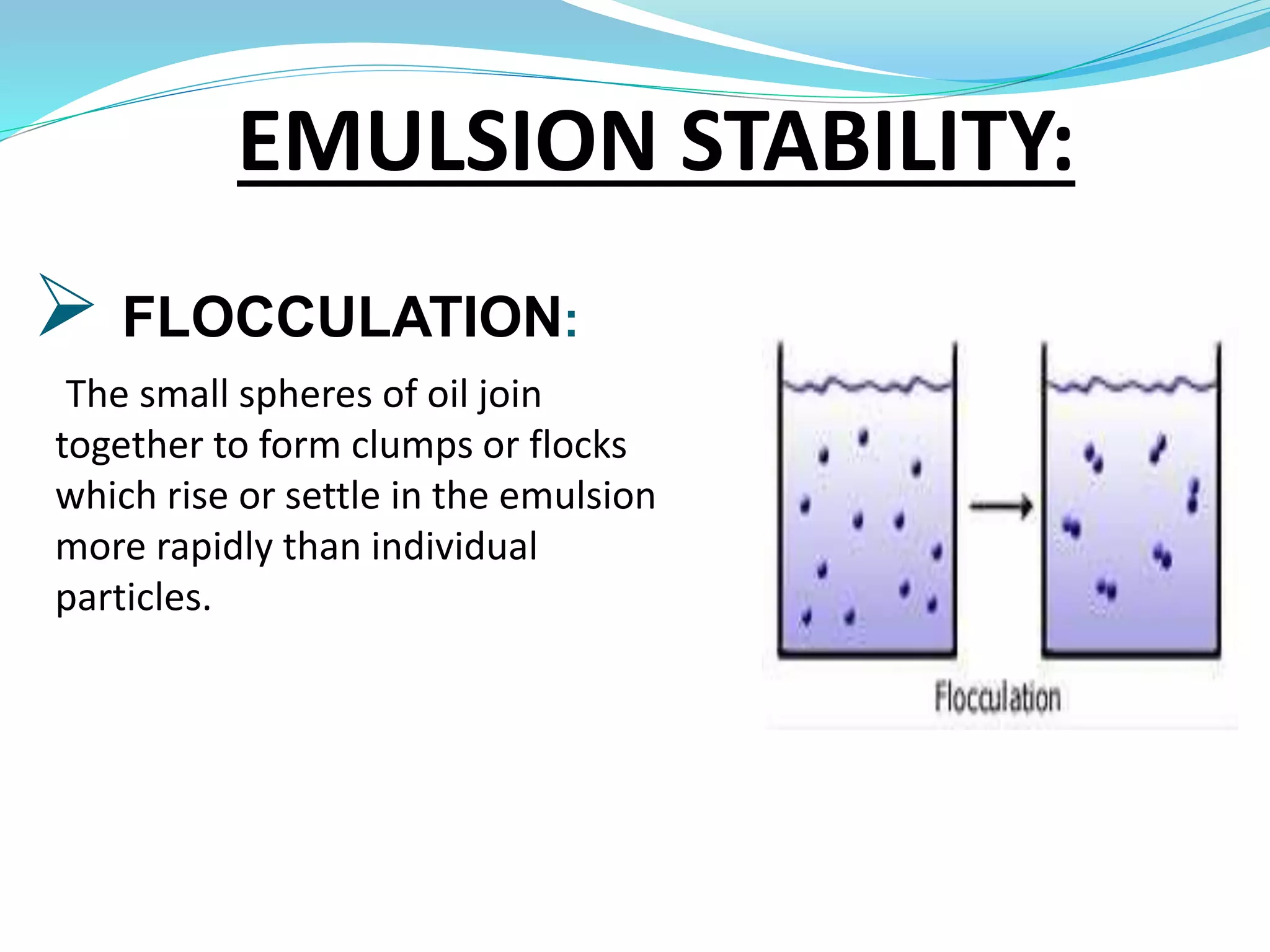
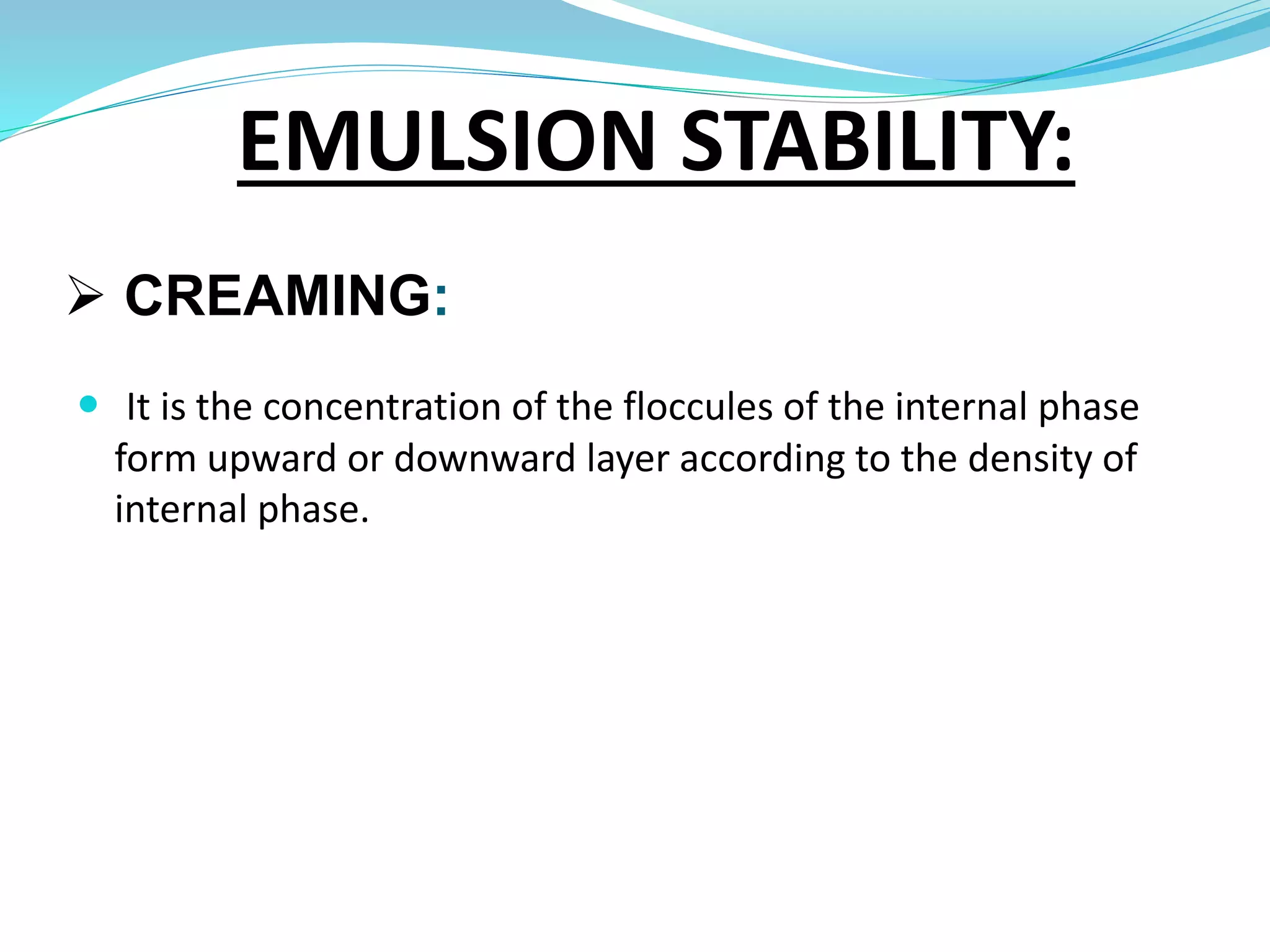

![ Factors affect creaming:
Globule size:
↑globule size ↑creaming
The density of the internal phase and External phases:
pi-pe=0 dx/dt=0
pi-pe=-ve[i.e.-ve velocity upward creaming]
pi-pe=+ve [downward creaming]
Gravity:
Constant, however centrifugation is applied
Velocity:
↑ ↓creaming
EMULSION STABILITY:](https://image.slidesharecdn.com/prestationemulsion-150510155323-lva1-app6891/75/emulsion-39-2048.jpg)




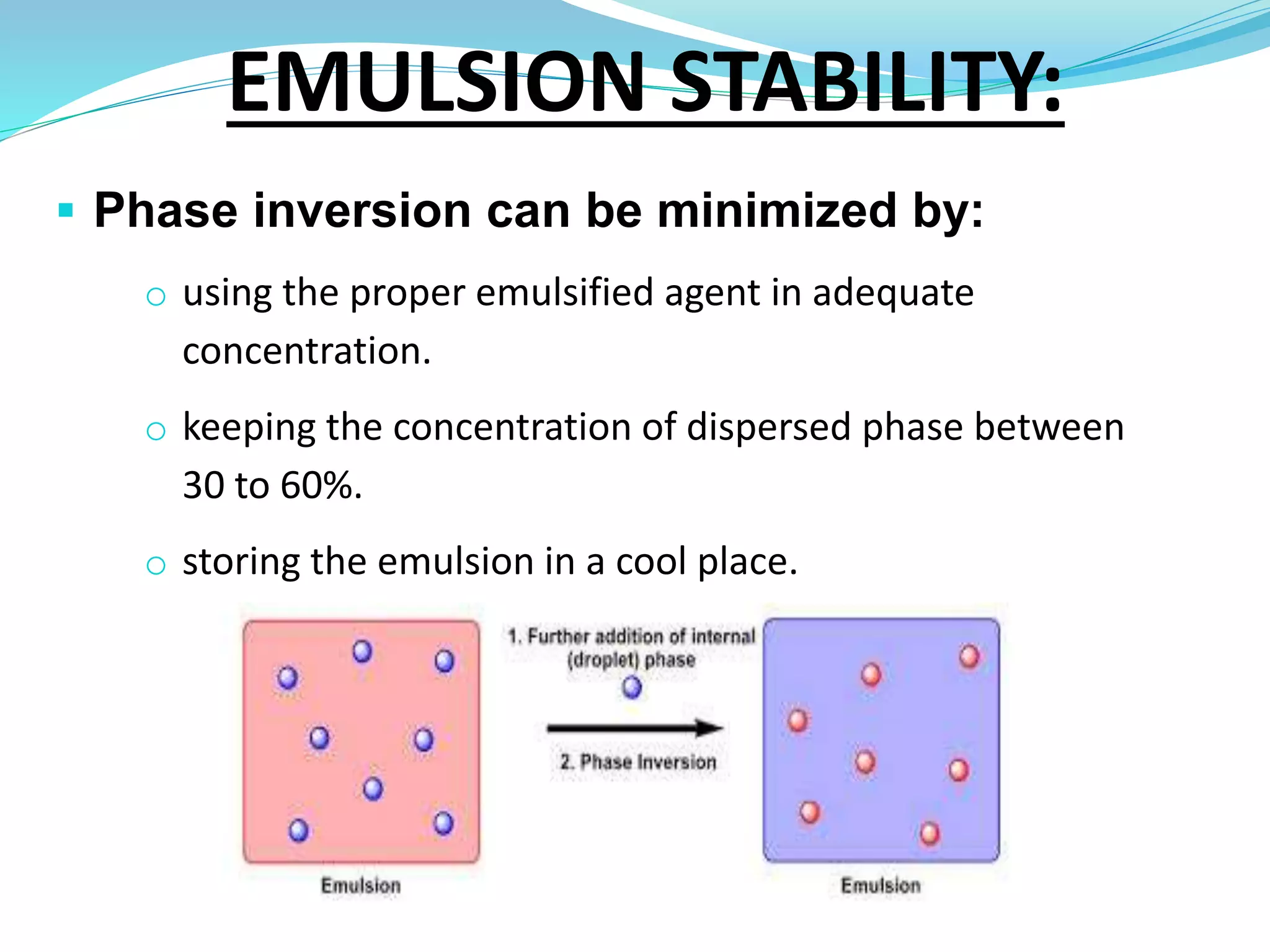

















![ Nascent Method or In Situ Soup
Method:
o The two types of soaps developed by this method are calcium
soaps and soft soaps.
o Calcium soaps are W/O emulsion that contain certain
vegetable oil, such as oleic acid, in combination with Lime
water [ calcium hydroxide solution ca[0H]2 ].
o They are prepared simply mixing equal volumes of the oil and
lime water.
METHODS OF PREPARATION:](https://image.slidesharecdn.com/prestationemulsion-150510155323-lva1-app6891/75/emulsion-62-2048.jpg)







